Many different branches of modernist architecture exist, from Art Deco and constructivism to expressionism and metabolism. However, not all 20th-century buildings get the care and attention they might deserve. Enter, stage left, what’s known as socialist modernism—brutalist buildings erected in Eastern Europe during the Cold War, right up to the fall of the Soviet Union.
It is imposing grey monoliths. Functional yet also possessing gorgeous but deeply bizarre designs. These are just some of the ways that you can describe these buildings. We’ve collected some of the most impressive examples of socialist modernism designs from the r/SocialistModernism and r/SocialistModernism1 online communities to share them with you. Scroll down, upvote the pics that impressed you the most, and let us know if you’ve seen any of these architectural marvels in person.
01. Prefabricated Elephant Slide In Dresden, East Germany, CCA 1965
02. Spodek (“Saucer”) Multipurpose Arena Complex In Katowice, Poland. Built In 1971
03. Military Medical Academy Complex – Belgrade, Serbia
Modernist architecture focuses on minimalist, functional designs that reject over-the-top decorations. These buildings are also defined by the materials used: glass, steel, and reinforced concrete.
But with so many different ‘flavors’ of modernism, no two architectural subgenres are precisely alike, even if they overlap significantly. Socialist modernism, for instance, is very brutalist and functional, and you won’t mistake it for, say, the De Stijl or the post-war Japanese ‘metabolism’ styles.
04. State Museum Of History, Uzbekistan (1968-70) By Yevgeniy Rozanov And Vsevolod Shestopalov
05. Modernist Architecture Of Bus Stop In Kazakhstan
06. Sanatorium/Rehabilitation Center, 1985, Dombay, Karachay-Cherkess Republic
Socialist modernism is the style of architecture erected in Central and Eastern Europe between 1955 and 1991. However, these ancient Eastern Bloc designs aren’t all given the care they deserve. As time marches on, many of these giant slabs of history are falling into disrepair.
However, some aim to preserve these shards of peculiar design. The Guardian notes that the Bureau for Art and Urban Research (BACU, aka the Birou pentru Artă şi Cercetare Urbană) began documenting and preserving these buildings and their heritage in 2014.
07. The Iron Fountain – Gyumri, Armenia
08. Pov: Soviet Chad Calling Your Girl Over Satellite Phone
09. The Palace Of Ceremonies, Tbilisi, Georgia
“We aim to revitalize this heritage not only for symbolic reasons but because we believe in these elements that managed to defy some of the ideological requirements, giving the urban space a certain flavor so characteristic of those times,” Dumitru Rusu from BACU told The Guardian.
“Boulevards, public buildings, living units, and monuments all clearly reflect the social and cultural context of the socialist period.”
10. Hala Arena In Poznań, Poland. An Indoor Sporting Arena Built In 1974
11. The Strange Beauty Of Soviet Bus Stops
12. Hotel “Vrbak”, Novi Pazar, Serbia. Built In 1976 With A Bit Of An Oriental Touch To Suit The Ethnicity That Lives In This Area
The initiative kicked off by BACU also maps socialist modernist buildings in Europe using an online tool on its website. This way, it promotes awareness of countries’ architectural heritage, which many people might have walked past a hundred times without realizing what they were looking at in the skyline.
13. When The East Meets The West Modernist Architecture
14. Bodiul’s Viewpoint Platform, Near Chisinau, Moldova, Built In The 60s (C) Bacu/ Photo Bu Dumitru Rusu
15. Mosaic In Former-Soviet Central Asia
The r/SocialistModernism1 subreddit appears to be a branch of the BACU project to raise awareness of this style of architecture on various internet and social media platforms. They aim to protect, monitor, research, and preserve various socialist modernist buildings, monuments, parks, squares, and “entire districts and green areas.”
16. Sevan Writer’s House
17. Rudo Skyscrapers, Just Took The Photo Now
18. Museum Of Contemporary Art, Belgrade
The first phase of BACU’s project is all about analysis and research. In contrast, the second focuses on regulations and educating the authorities and locals about the socialist modernist cultural heritage. The project also aims to unite everyone interested in architecture and preservation, from architects and urban planners to artists, activists, historians, and anyone else.
19. Mountain Kosmaj, Serbia. Built In 1971 Architect Gradimir Medaković And Sculptor Vojin Stojić (C) Bacu / Photo By Dumitru Rusu
20. Lake Sevan Viewing Platform Modernist Architecture
21. Trade Fair Center, Accra, Ghana, Designed By Vic Adegbite, Jacek Chyrosz, And Stanislaw Rymaszewski In 1967. One Of Many Collaborations Between African And Eastern European Planners From This Era
As time passes, the philosophy of building and shaping our cities also shifts. It’s important to find compromises between the artistic visions of capable designers and what the people living in the area genuinely need. Every new project is an opportunity to do better and better. Of course, what the ‘better’ means will depend on what society as a whole values at the moment.
22. Genex Tower Modernist Architecture
23. Tuzla Bank, (Now Nlb) Tuzla, Bih, Built In 1977, Architect V.stojanović © B.A.C.U. / Photo By Dumitru Rusu
24. Abandoned Lakeside Building, Chisinau
Architectural innovation doesn’t have to be radical, as Dr. June Komisar from Ryerson University told us in an interview. “[It] can be an incremental change that will benefit the users and society. We have a huge opportunity to build sustainable buildings that approach or attain a ‘net zero’ energy cost. By using local and sustainable materials, designing for passive and active solar and wind power, designing for shallow energy usage, and renovating and adapting existing buildings, we can help to mitigate climate change,” the expert in architectural design and the history and theory of architecture said.
25. Fontana Complex, New Belgrade, Serbia. Built In 1968, Architect Uroš Martinović
26. Home Furniture Store In Bucharest, Romania
27. Modernist Architecture Of Derzhprom Building, Kharkiv
According to the expert, it’s essential to balance the building’s aesthetics and relationship to the site with its structural integrity and sustainability. “Understanding the site conditions and evaluating other buildings using the same construction techniques and materials can help avoid problems,” she pointed out how architects can aim to avoid at least some issues during the actual building process.
28. Brutal Buildings In Novi-Sad, Serbia
29. Communal Buildings In Berlin’s Eastern Half From The Ddr
What do you think about socialist modernism, dear A&D followers? Does this architectural style appeal to you, and do you think it’s heritage worth saving? Which of these photos left the biggest impression on you? Have you ever seen any of these buildings in person? Share your thoughts and experiences in the comments!
30. The Former Memorial House Of The Bulgarian Communist Party (Buzludzha Monument), Shipka Pass, Bulgaria, Built In 1981, Architect Georgi Stoilov (C) Bacu / Photo By Dumitru Rusu
31. “Karaburma” Dorm, Belgrade, Serbia
32. Panorama Resort – Štrbské Pleso, Slovakia
33. Post-Soviet Modernist Architecture In Central Asia
34. One Of The Two Halls Of Parting, Memory Park (Kiev), Ukraine. Built 1968–1981 Architect: A. Miletsky Concept, Design, Architectural Plastic Copyright Modeling Of Wall Of Remembrance By Artists Ada Rybachuk And Vladimir Melnichenko (C) Bacu / Photo By Dumitru Rusu
35. Town Square View Towards “Zlatibor Hotel” In Užice, Serbia
36. Lenin V. Palace Of Sports – Bishkek, Kyrgyzstan
37. Chisinau State Circus Modernist Architecture
38. Cafesjian Art Museum – Cascade, Yerevan, Armenia. Design 1975-1980 Built 1985-2000 Architects Sargis Gurzadyan With Jim Torosyan, Aslan Mkhitaryan (C) Bacu / Photo By Dumitru Rusu
39. Sports And Concert Complex – Yerevan, Armenia
40. Central Station – Sofia, Bulgaria
41. Iaşi, Romania
42. Lviv Bus Terminal Stryiska 109, Lviv, Built-In 1980 Architect: V. Sahaydakivsky, M. Stoliarov Engineer: V. Boykiv, A. Yefremov. (C) Bacu / Photo By Dumitru Rusu
43. The Aul Residential Complex, Tole Bi 286/1, Almaty, Kazakhstan Built In Stages Between 1986-2002 Architects: B. Voronin, L. Andreyeva, Yu. Ratushnyi, V. Lepeshov, V. Ve, M.rakhimbayev Designers: S. Matveyev, G. Klochkovskaya, V. Zinstein, S. Kainarbayev (C) Bacu / Photo By Dumitru Rusu
44. Vojni Soliter (Military Skyscraper), Belgrade
45. Entrance Group With Concrete Decor Elements In New Belgrade, Serbia
46. Bank Of Georgia Modernist Architecture
47. The Monument House Of The Bulgarian Communist Party – Buzludzha, Bulgaria
48. “Romanița” is a Collective Housing Tower For Small Family Units in Chisinau, Moldova, Built Between 1978 and 86. The Architect is Oleg Vronsky, With O. Blogu, S. Crani, N. Rebenko, And P. Feldman. The engineer is A. Marian. © Bacu/ Photo By Dumitru Rusu
49. Modernist Architecture Of A Residential Building In Tbilisi
50. The Business Building Of “Energoprojekt” In Belgrade, Serbia. Built In 1982
51. Monument On Freedom Hill By Janez Lenassi In Ilirska Bistrica, Republic Of Slovenia, 1965. (C) Bacu © Bacu / Photo By Dumitru Rusu
52. Modernist Architecture In Moscow, Russia
53. Building In New Belgrade, Serbia
54. Centrum Department Store At Suhl, East Germany, (1969)
55. Modernist Architecture, The Bank Of Georgia’s Headquarters – Tbilisi, Georgia
56. Glavna Posta / The Central Post Office Of Skopje (Part Of The Ptt Telecommunications Center), Detail Skopje, Republic Of North Macedonia Built In 1972-74. Urban Planning: Kenzo Tange (1960s) Architect Janko Konstantinov (C) Bacu / Photo By Dumitru Rusu
57. The Immaculate Conception Roman-Catholic Church, (Biserica Romano-Catolică “Neprihănita Zămislire”) Orșova, România. Built Between 1972-1976 Architect Hans Fackelmann. © Bacu / Photo By Dumitru Rusu
58. The Blinov Sports And Concerts Complex – Omsk, Russia
59. The Stunning Hotel Roman: Baile Herculane, Romania. Built 1974-76. Architect Salumita And A. Mureșan. Hotel/Sanatorium, Still In Use. Built Over Roman Baths From 107 AD
60. Leipzig Gewandhaus, Germany, Designed By Rudolf Skoda In 1975
Like what you’re reading? Subscribe to our top stories.





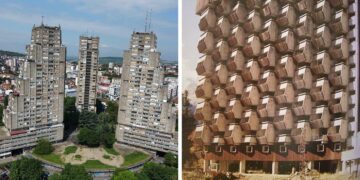
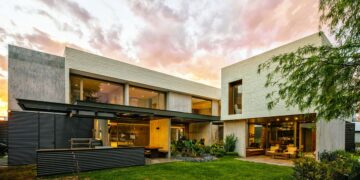
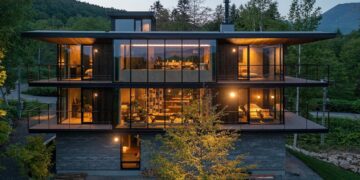
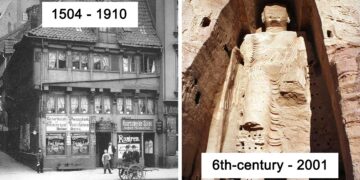




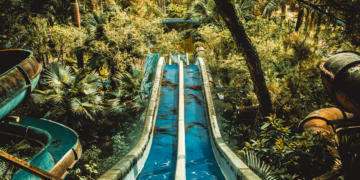



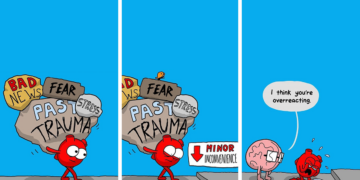



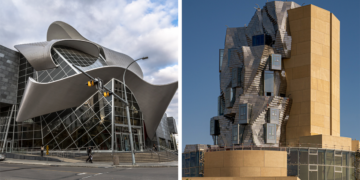
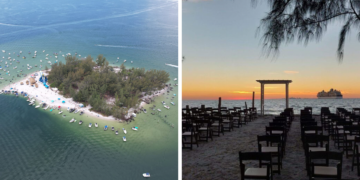
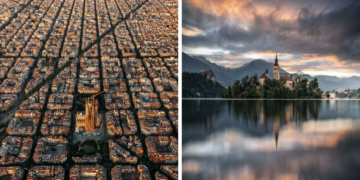
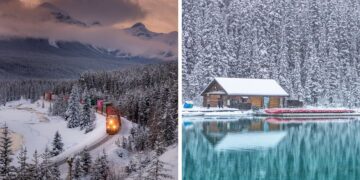


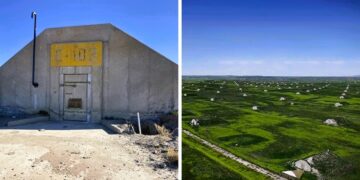







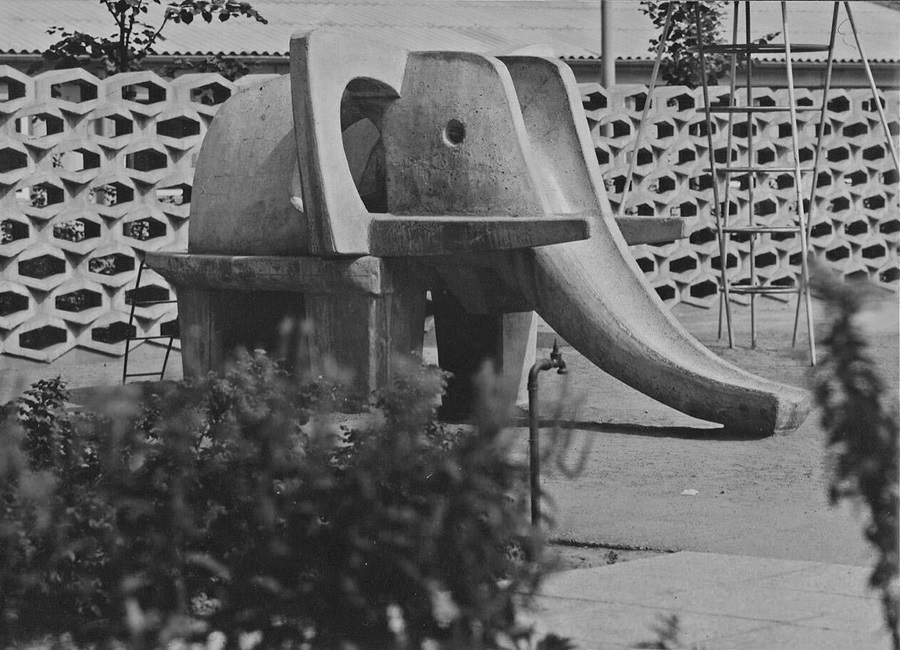



































































Discussion about this post